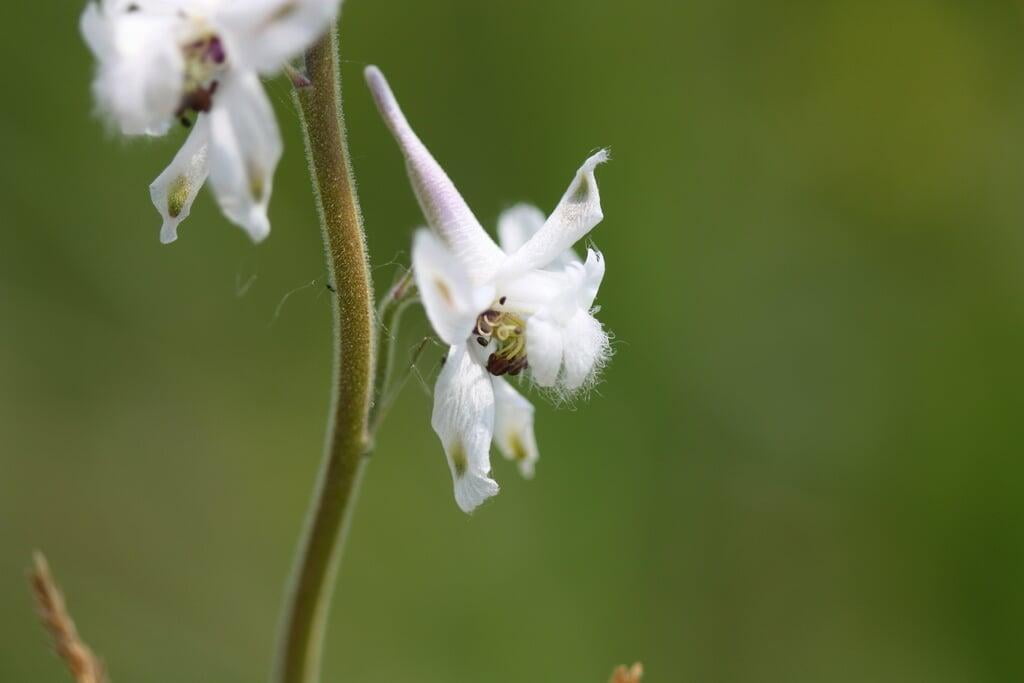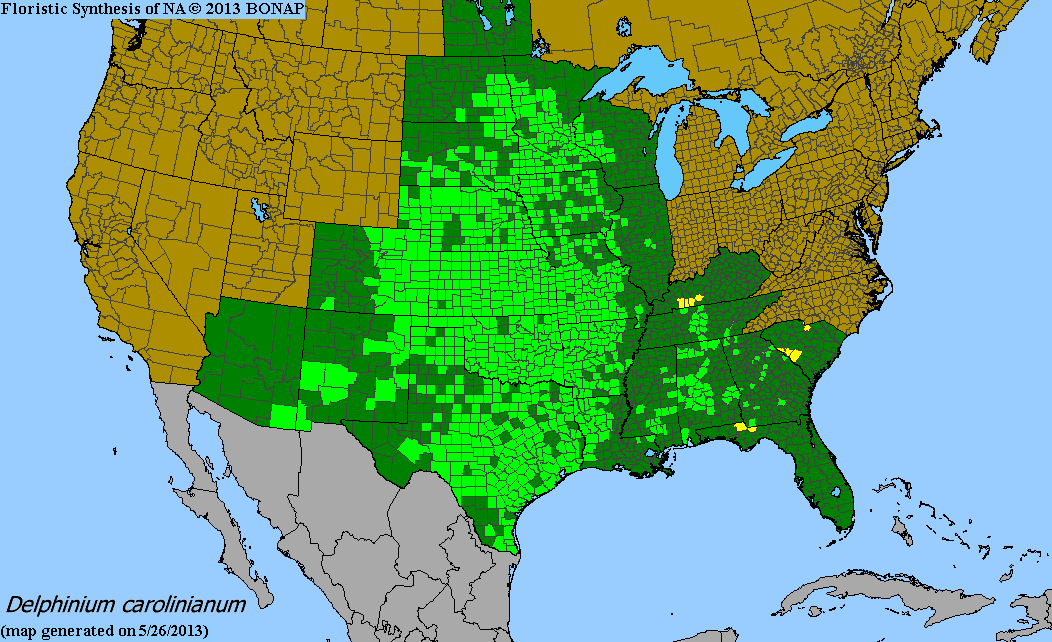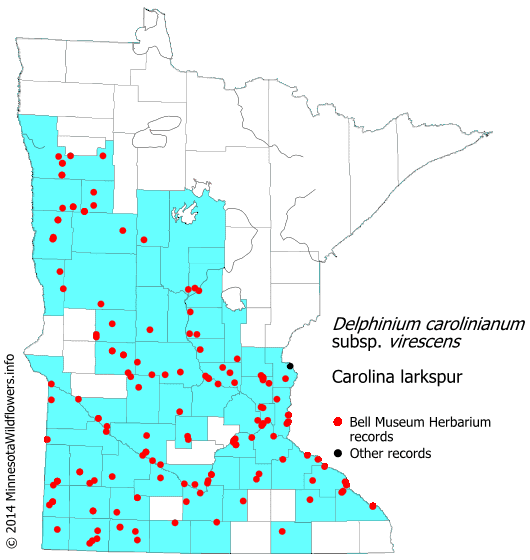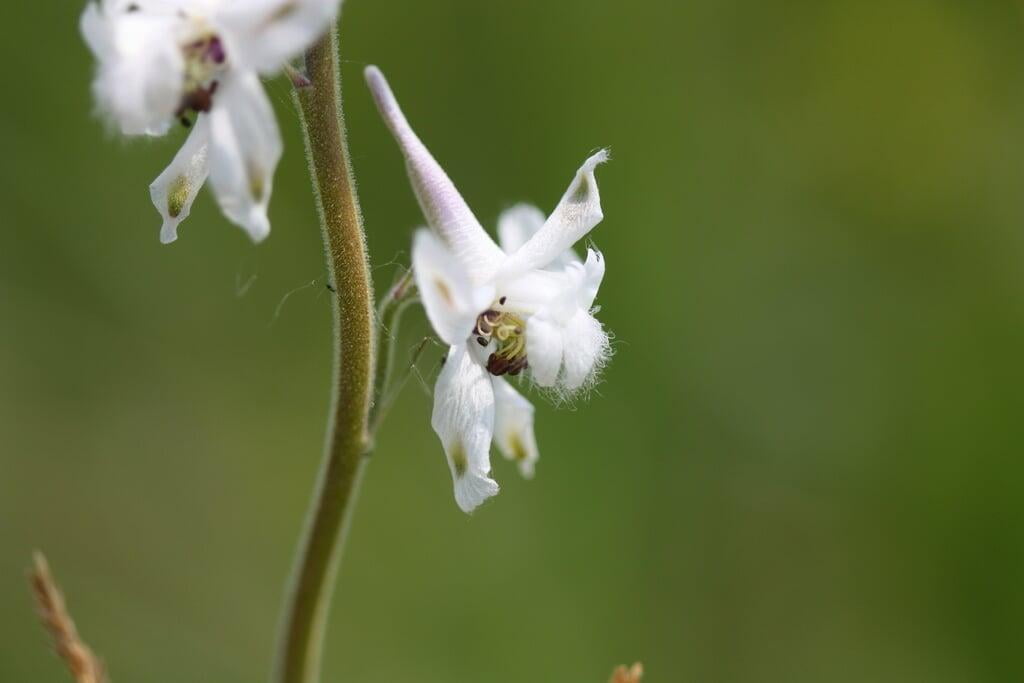Delphinium carolinianum
Carolina Larkspur Description:
Delphinium carolinianum, commonly known as Carolina Larkspur, is a flowering plant species native to North America. It belongs to the buttercup family and is commonly found in meadows and other open habitats.
Carolina Larkspur can be an annual or biennial plant, growing up to 3 feet tall with tall and slender stems that are usually branched. The leaves are deeply lobed and have a palmate shape. The flowers of Delphinium carolinianum are showy and range in color from blue to purple with a characteristic spur at the back of each flower. The flowers bloom from spring to early summer and are nectar-producing, making them pollinator-friendly and attracting bees and butterflies to the garden.
However, it should be noted that Delphinium carolinianum is toxic to livestock and can cause serious health problems if ingested, so care should be taken when planting it in areas where grazing animals may be present.
Native Range:
Carolina larkspur can be found growing natively in much of the Midwestern United States. Its range expands from Minnesota down to Texas; as far East as Florida and as far West as Arizona.
Standard Plant Information:
Plant Height: 1' - 3'
Bloom Time: June - July
Preferred Habitat: Does well in full sun. Often found dry prairies and woods.
Sowing:
For most homeowners, the best option is to scatter seed on the ground by hand broadcasting at a minimum of 16-64 pls ounces per acre. For even coverage, we recommend that you broadcast seed in perpendicular rows across the site to ensure even coverage.
You’ll want to broadcast any grass seed first, which will get raked into the soil lightly. Next, it is ideal to mulch the area lightly with either a clean (no seed) straw or preferably with our native Little Bluestem straw, sold at our retail garden centers. After a light mulching is complete, now it’s time to broadcast your native wildflower seeds, which should not be raked into the soil. A good rain or watering is sufficient to cover the seed.
Planting:
Simply dig a hole in the soil slightly larger than the plant’s roots. Ensure that the soil line of the plant is maintained during the transfer (i.e. the plant should be at the same level with the ground as it was in the pot). Pack any loose dirt back around the plant and make sure you water it well the same day to ensure it has the best chance of survival.








